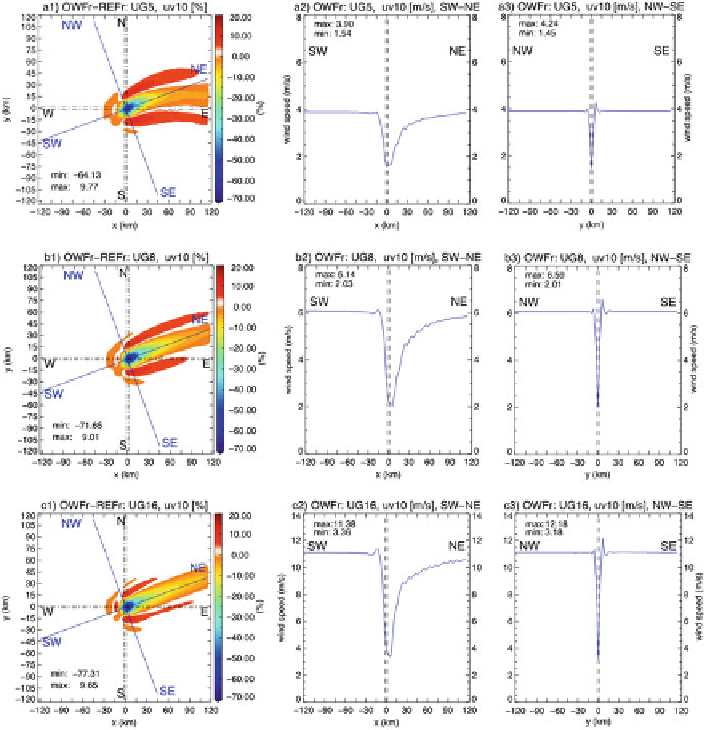Civil Engineering Reference
In-Depth Information
Fig. 4.3 OWF effect on wind field due to different prescribed wind speeds. (a1)-(c1) Percentage
change of 10-m wind field due to 12-wind-turbine OWF. Wind wake reduction (a2)-(c2) in (SW-
NE) and (a3)-(c3) orthogonal (NW-SE) to wind direction in case of three different ground wind
speeds is presented after 4 h of METRAS simulation; values given in m/s. From top to bottom:
results based on the different prescribed wind fields of ug
¼
5 m/s (a1-a3), ug
¼
8 m/s (b1-b3),
and ug
¼
16 m/s (c1-c3)
cases, the wake flanks become shorter and thinner with increasing wind speed. A
reason for this is that in case of higher wind speeds, occurring gradients are better
balanced, which limits a strengthening of gradients. Therefore, it can be said that
the area affected by OWFs decreases with wind speeds related to the area of the
wake flanks.
Apart from that, a comparison of the three wind speed cases results in a small
difference by maximal 10.0 % over the wind wake area and around 0.7 % over the
wake flank zone. However, absolute differences results in greater discrepancies.
How sensible the ocean reacts to these changes can be seen in Sect.
5.2
.

Search WWH ::

Custom Search